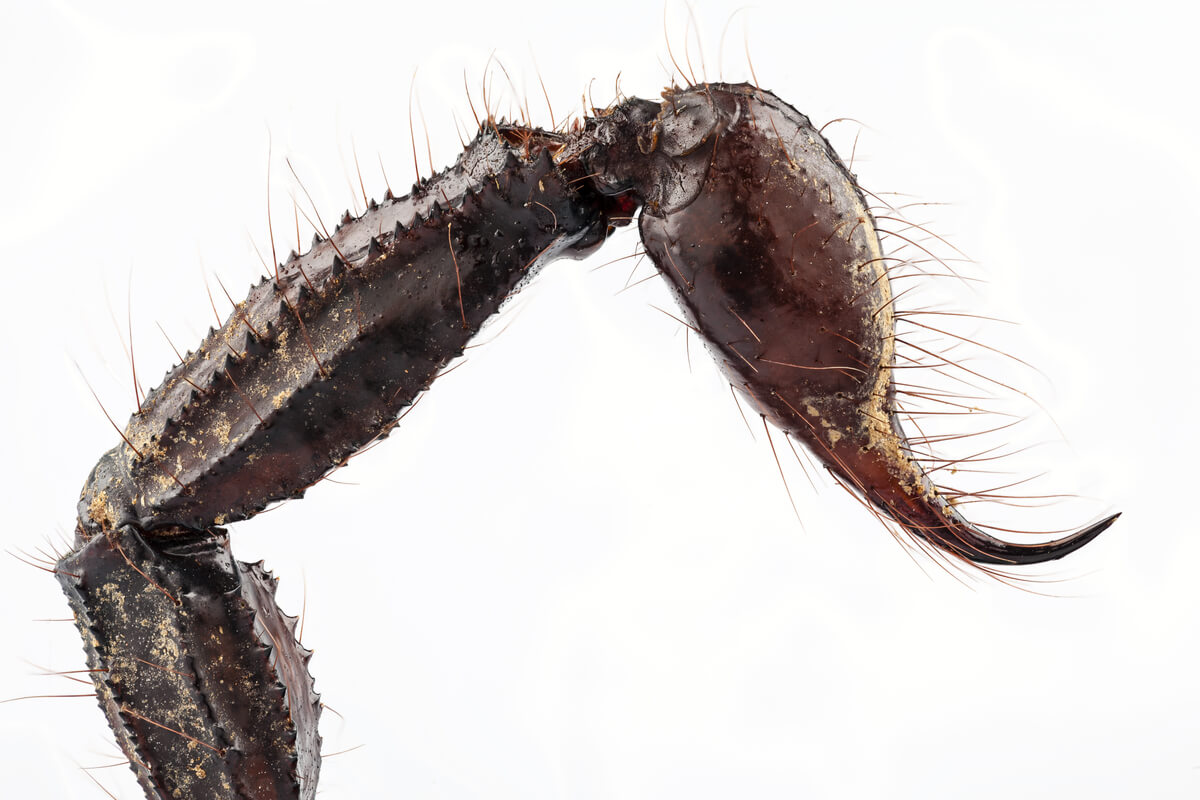Scorpion Stings in Dogs: What to Do?


Reviewed and approved by the biologist Samuel Sanchez
Although not very frequent, scorpion stings in dogs can occur mostly when your pet walks alone at night, even more so if it’s in wooded areas. As alarming as it may be to see your dog suffering, when this situation happens, you must remain calm and accept that it’s an uncommon accident.
Based on this premise, the owner must keep a cool head and act calmly in the event of an incident like this. Here we’ll show you how to deal with scorpion stings in dogs.
Scorpions and their stings
The scorpion uses its sting as a form of defense, so dogs can be affected when they get too close to it. Due to their nocturnal habits and how quick they are, scorpions pose a danger to dogs in open, wooded or desert areas, where they’re most prevalent.
More than 1500 species of scorpions have been described worldwide.
A dog can be stung by a scorpion when it inadvertently steps on the scorpion or when it sniffs around in dark places, where these arachnids tend to move around to feed. Although it’s true that the sting can be fatal, this depends a lot on the area where the dog is stung.

What are the main symptoms?
This sting is quite painful for the dog and, depending on the species of scorpion, it can mean a medium or high risk for the life of your pet. Here’s a list of symptoms and advice on what to do if a scorpion stings your dog:
- Tears, salivation, and moans of pain: If you see this strange behavior in the dog and it tries to look for you to comfort it, then it could be a sign they’ve been stung by a scorpion. If they’ve been stung on a limb, it’s very likely that the dog will hold its paw in the air, whimpering constantly because of the pain caused by the sting.
- Tremors and dilated pupils: Similarly, if, after a night walk, you notice that the dog is shaking and its pupils are more dilated than normal, feel its body to see if there’s any area with abnormal pain.
- Swelling and respiratory difficulties: Breathing irregularities are another indication of a scorpion sting. If, for some reason, you don’t realize in time then swelling is likely to occur. Quickly look for the area of the sting and take your dog to an emergency vet.
In very serious cases where, for example, if the dog was alone at the time of the sting, or if the scorpion is especially poisonous, then the dog could suffer convulsions and collapse. At this point, its life would be in serious danger, and so get to a veterinarian as soon as you can.
What to do with scorpion stings in dogs?
As soon as you notice any of the symptoms mentioned above, you should go to the veterinarian quickly. The situation shouldn’t be taken lightly and every minute counts. Because of this, forget any home remedies and make the trip to the vet clinic as soon as you suspect the sting.
If you should see the scorpion then you could attempt to trap it in a jar or something similar. In this way, the veterinarian will determine the species and the procedure to be followed. However, avoid doing this if you don’t think you’ll be able to do it with sufficient caution. Don’t risk your health, or anyone else’s in your household.
You could also choose to try to photograph the scorpion as quickly as possible and go to the nearest veterinary clinic. On the way to the veterinarian, you could search online to see which species are the most common in your area.
If there’s a delay in being able to get your dog to the vet’s, then you could apply cold compresses on the sting area after having properly sanitized the lesion. In most cases, after receiving the antidote, your dog will overcome the pain and return to its normal life.
Are home remedies good?
It’s never recommended to apply home remedies on scorpion stings in dogs, as it’s a poison that must be treated by a specialist. The most you can do is to clean the area of the sting and carefully remove any remains of the arachnid, such as the stinger (although this isn’t very usual).
In addition, you should keep the pet calm and prevent its movement as much as possible, as this will reduce how quickly the venom spreads. Never self-medicate your pet, especially in such a critical situation. It’s best to call your veterinarian to inform them that you’re on your way to their clinic and to ask what else you can do for your dog.
How to prevent stings
The best rule you can put into practice is to prevent your dog from going out at night to play or walk in your garden or woods as much as possible. These are the areas and times when the scorpion will leave its nests, making a possible encounter between the two more likely.
Likewise, try not to have accumulated wood in your house or garage. This is a favorite hiding place for the animals that the scorpion feeds on. One trick you can apply is to spray the entrances to your home with vinegar diluted in water, as this is a repulsive scent for scorpions and other arachnids. Although you could also opt to use lavender.
If your pet ever falls victim to a scorpion sting, you should keep the phone number of the nearest veterinary clinics close by.

Staying calm is difficult, but you must control your emotions and focus your efforts on getting medical attention for your dog as soon as possible. The quicker your dog is treated, the better their chance of recovery.
All cited sources were thoroughly reviewed by our team to ensure their quality, reliability, currency, and validity. The bibliography of this article was considered reliable and of academic or scientific accuracy.
- Cómo mantener a las arañas y los alacranes fuera de tu casa utilizando productos naturales. Recogido el 1 de marzo de 2021 de https://es.wikihow.com/mantener-a-las-ara%C3%B1as-y-los-alacranes-fuera-de-tu-casa-utilizando-productos-naturales
- Murthy, K. R. K., & Vakil, A. E. (1988). Elevation of plasma angiotensin levels in dogs by Indian red scorpion (Buthus tamulus) venom & its reversal by. Indian J. Med Res, 88, 376-379.
- Murthy, K. R. K., & Haghnazari, L. (1999). The blood levels of glucagon, cortisol and insulin following the injection of venom by the scorpion (Mesobuthus tamulus concanesis, Pocock) in dogs. J Venom Anim Toxins, 5(1), 47-55.
- Tarasiuk, A., Khvatskin, S., & Sofer, S. (1998). Effects of antivenom serotherapy on hemodynamic pathophysiology in dogs injected with L. quinquestriatus scorpion venom. Toxicon, 36(7), 963-971.
- Ribeiro, E. L., Pinto, M. C. L., Labarrere, C. R., Paes, P. R. O., Paes-Leme, F. O., Chávez-Olórtegui, C., & Melo, M. M. (2010). Biochemical profile of dogs experimentally envenomed with Tityus serrulatus scorpion venom. Toxicon, 55(6), 1125-1131.
This text is provided for informational purposes only and does not replace consultation with a professional. If in doubt, consult your specialist.